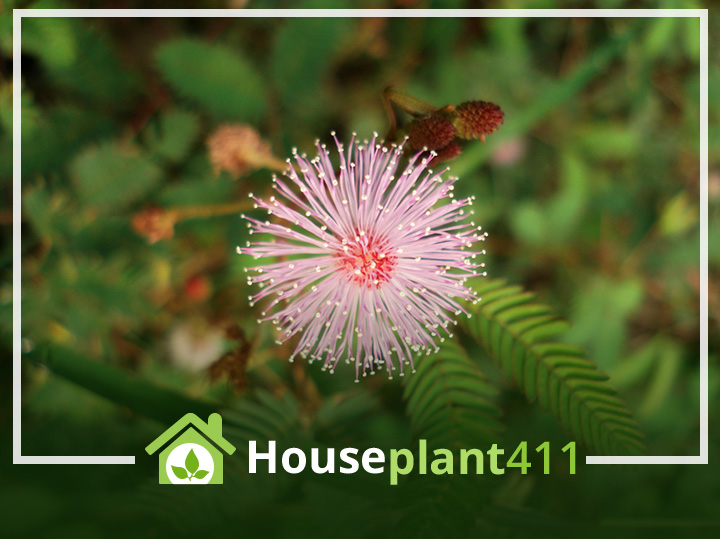The Mimosa species of plants began as a creeping annual plant in Central and South America and is still often used as a ground cover. The Mimosa pudica or Sensitive Plant is the variety most often grown as a houseplant. The Sensitive Plant has prickly delicate branches and feathery fronds that fold inward and droop when they are touched, shaken, or even blown on; these are called seismonic movements. The leaflets of a Sensitive Plant reopen in about half hour but fold up naturally each night. Although fun to watch, the opening and closing of the leaves weakens a Sensitive Plant if it occurs too often. These plants are considered poisonous and should be kept away from pets and children. Read more about common houseplants that are poisonous in Don’t Feed Me to Your Cat: A Guide to Poisonous Houseplants. A Mimosa Pudica may produce tiny pink flowers that resemble little fluffy balls, but this occurs more often when it is planted outdoors than indoors.
Plant Care
Light
Sensitive Plants, Mimosa pudica, require bright light and even direct sun in the early morning.
Water
Keep the soil of a Sensitive Plant moist but never soggy. A Mimosa Pudica requires less water during the winter. Sensitive Plants thrive on rain water if it is not acidic. A Sensitive Plant needs less water in the winter months.
Fertilizer
Feed a Sensitive Plant every two weeks in the spring and summer with a plant food high in potassium. Diilute the plant food for a sensitive Plant to 1/2 the recommended strength. A tomato plant food works well on Sensitive Plants.
Temperature
Sensitive Plants like temperatures between 60°-85°F (16°-29°C).
Humidity
Sensitive Plants require high humidity to look their best. Place Sensitive Plants on a wet pebble tray to increase the humidity but be sure the plant is sitting on the pebbles and not in the water.
Flowering
A Mimosa Pudica, Sensitive Plant, produces small, pink, powder-puff like flowers in the summer. When kept indoors as a houseplant, a Sensitive Plant may never bloom but its leaves will still open and close.
Pests
When used as a houseplant, a Sensitive Plant is not usually bothered by plant pests. Spider Mites are the only insects to watch for.
Diseases
Because a Sensitive Plant thrives in high humidity, it is prone to fungal houseplant diseases such as Pyrethrum Blight and Fusarium.
Soil
Use any good potting soil that drains well for a Sensitive Plant. If the potting soil appears heavy or clay like, add some Builders Sand to it.
Pot Size
Sensitive Plants rarely need to be re-potted.
Pruning
A Sensitive Plant should be pruned regularly to keep it full and prevent it from becoming leggy looking. You can prune a Sensitive Plant any time of the year.
Propagation
Sensitive Plants are propagated by stem cuttings in the spring and summer.
Poisonous Plant Info
Mimosa Pudica or Sensitive Plant has a level #4 toxicity and is a very poisonous houseplant. Always wash your hands with soapy water after touching the leaves of a Mimosa pudica.
FAQ
It’s very hard to get a Sensitive Plant to bloom indoors. You might try moving your plant outdoors once the temperature is staying above 60 degrees. The bright outdoor light might encourage it to bloom. Also use a fertilizer high in potassium in the spring and summer.
Sensitive Plants are very toxic and should be kept away from animals and small children. I know cats can reach just about anything so here are a couple of ideas how to keep them away from your plants. Cats do not like the smell of citrus so sometimes orange peels in the soil keep them away. Pet Stores sell several products that smell awful to cats that you can spray on your plants. You can plant a pot of Kitty Grass that will attract your cats and keep them away from your other plants.
Mimosa Pudicas need to be pruned on a regular basis to keep their shape. Start cutting back the leggy stems two or three of them at a time. As those start to branch out cut back the other stems. The plant will look full again before you know it.

